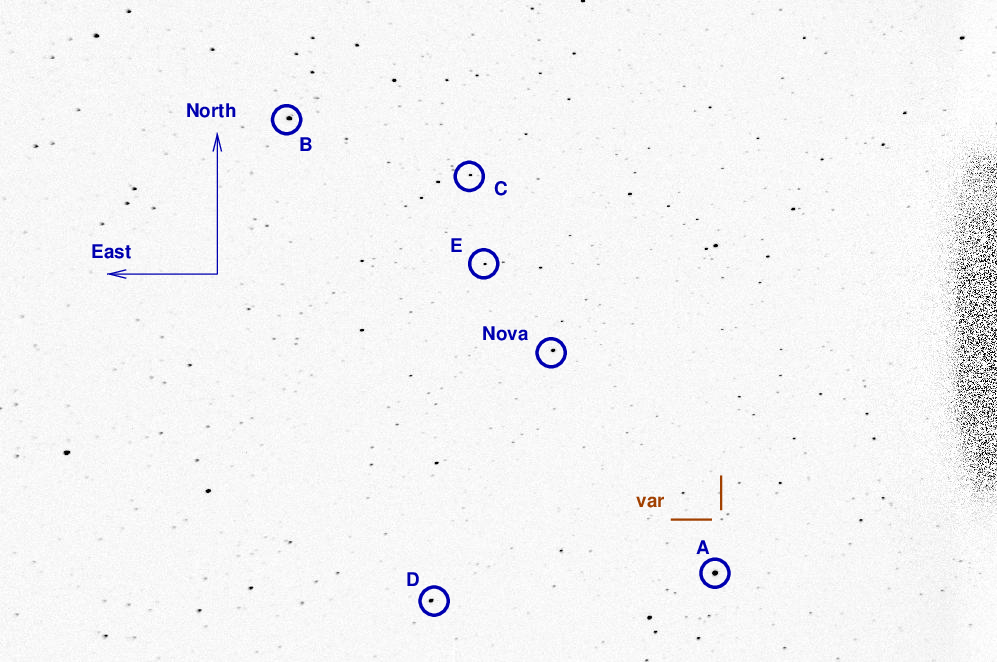
On the night of Jun 22/23, 2021, under fair conditions, I acquired images of Nova Her 2021 = V1674 Her. One can find information about it at
I also figured out why the guider hadn't been working properly for the past few nights, and fixed it. Hooray!
This object was discovered by Seiji Ueda (Kushiro, Hokkaido, Japan) on 2021 June 12.537 UT. It rose quickly, then fell quickly.
The main setup was:
Notes from the night:
I spent the first few hours of the night trying to figure out why the autoguider was not working properly. The MaximDL entry "Autoguider Output Control Via" should indeed be set to LX200 Protocol, and the appropriate port is COM4. Initially, however, MaximDL could not make a connection with COM4. Eventually, I un-plugged the USB cable from its terminal in the side of the control computer, then re-plugged it. After that, MaximDL _was_ able to connect to COM4, and then it could control the telescope motions.
See the note below next to the FWHM graph for information on the aggressiveness setting of the guider.
The object is located at
RA = 18:57:30.95 Dec = +16:53:39.6 (J2000)
A chart of the field is shown below. The size of the chart is about 31 x 26 arcminutes.

I've marked the location of several comparison stars as well. See
I'll use star "E" to shift my instrumental magnitudes to the V-band scale. It has a V-band magnitude (according to AAVSO chart X26675JQ) of 12.221, and (B-V) = 0.608.
The faint star marked "var" shows variations of size roughly +/- 0.3 mag in a roughly sinusoidal pattern over the run. It's perhaps an eclipsing binary. The star has magnitude V ~ 13.5 and position
RA = 18:57:04.13 Dec = +16:46:00.9 (J2000)
= 284.26722 = +16.76692
You can use its entry in the APASS catalog to look it up in Vizier, and to serve as a cross-reference.
I took a photo of the finder TV's screen when pointing to this target; this could be a useful reference for the future:
The sky value shows a few small wiggles due to brief passages of light clouds.

The FWHM graph below may give us information on the quality of the guiding for various settings of the aggressiveness in the X (= RA) direction.
Hmmm. There aren't dramatic changes in the scatter of the measurements, are there? If the guiding were poor, we'd expect a large scatter due to a mixture of trailed and untrailed images ... but we don't see any such big changes. I guess all of the settings above were reasonable.
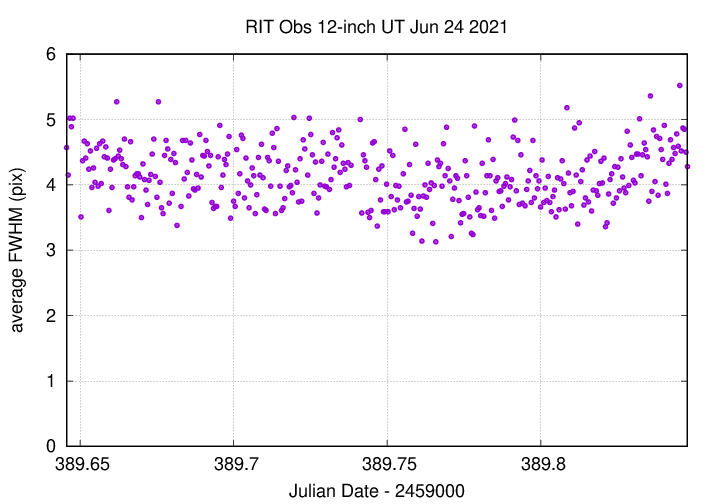
Using aperture photometry with a radius of 7 pixels in a V filter (binned 2x2, each pixel is 1.24 arcsec, so a radius of 8.7 arcsec), I measured the instrumental magnitudes of a number of reference stars and the target. Following the procedures outlined by Kent Honeycutt's article on inhomogeneous ensemble photometry, I used all stars available in each image to define a reference frame, and measured each star against this frame.
Sigma-vs-mag plots show that the floor was about 0.006 mag with a 30-second exposures. The brightest star, "A", is slightly saturated; the outlier at instrumental mag = 3.2 is the target. The faint variable is the highest outlier around instrumemtal mag = 5.0.
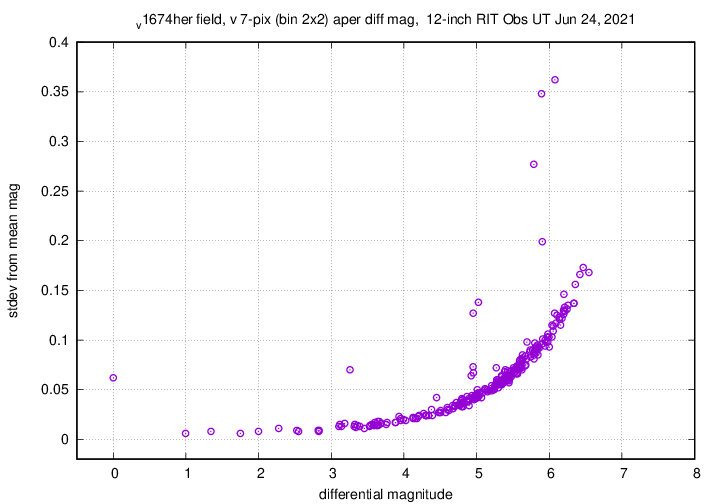
Most of the changes in image-to-image zero-point are due to trailing; I discarded all images with an zeropoint of more than 10.43; there were not many of them, thanks to the improvement in guiding.
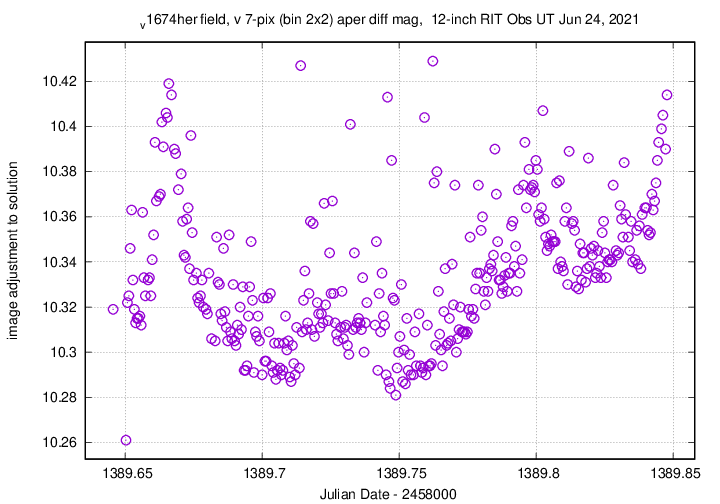
Here is the light curve of the object and several field stars in the V filter; I've shifted the instrumental magnitudes so that star "E" = 000-BMD-913 on AAVSO chart X26675JQ has the value given by AAVSO as its V-band magnitude. The faint variable star is labelled as "X".
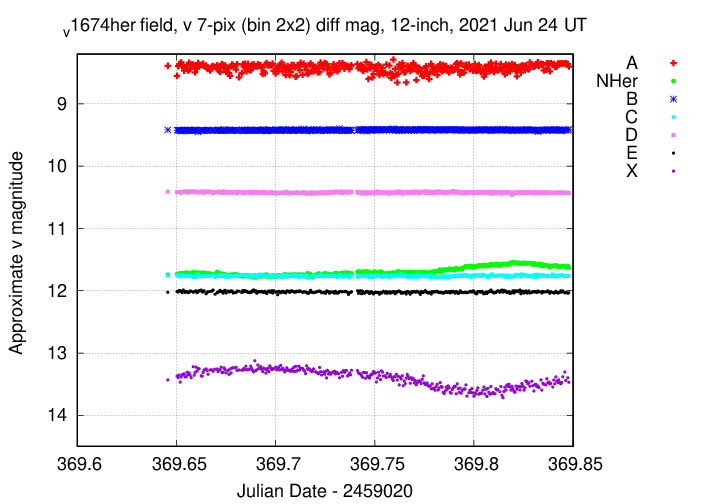
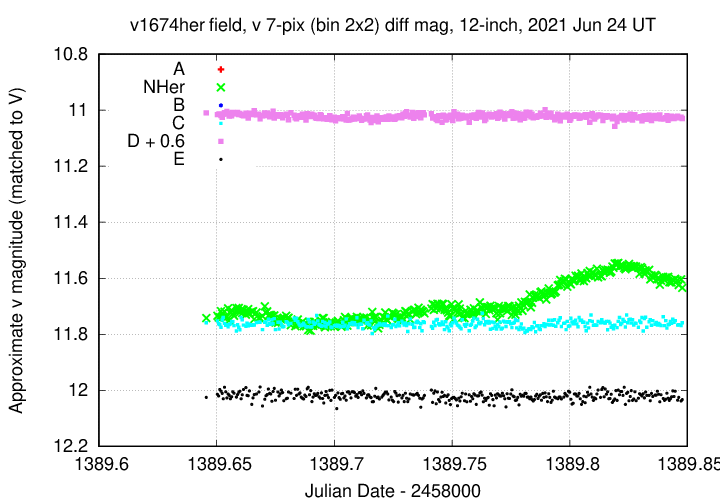
Can we still see any of the variations with period of about 8.4 minutes? Using the Periodogram tool at the NASA Exoplanet Archive, I computed the power spectrum of these measurements. Within the top 10 peaks are two close to 0.0058 days, which corresponds to 8.4 minutes; however, they aren't as strong as they were in the UT Jun 17 data.
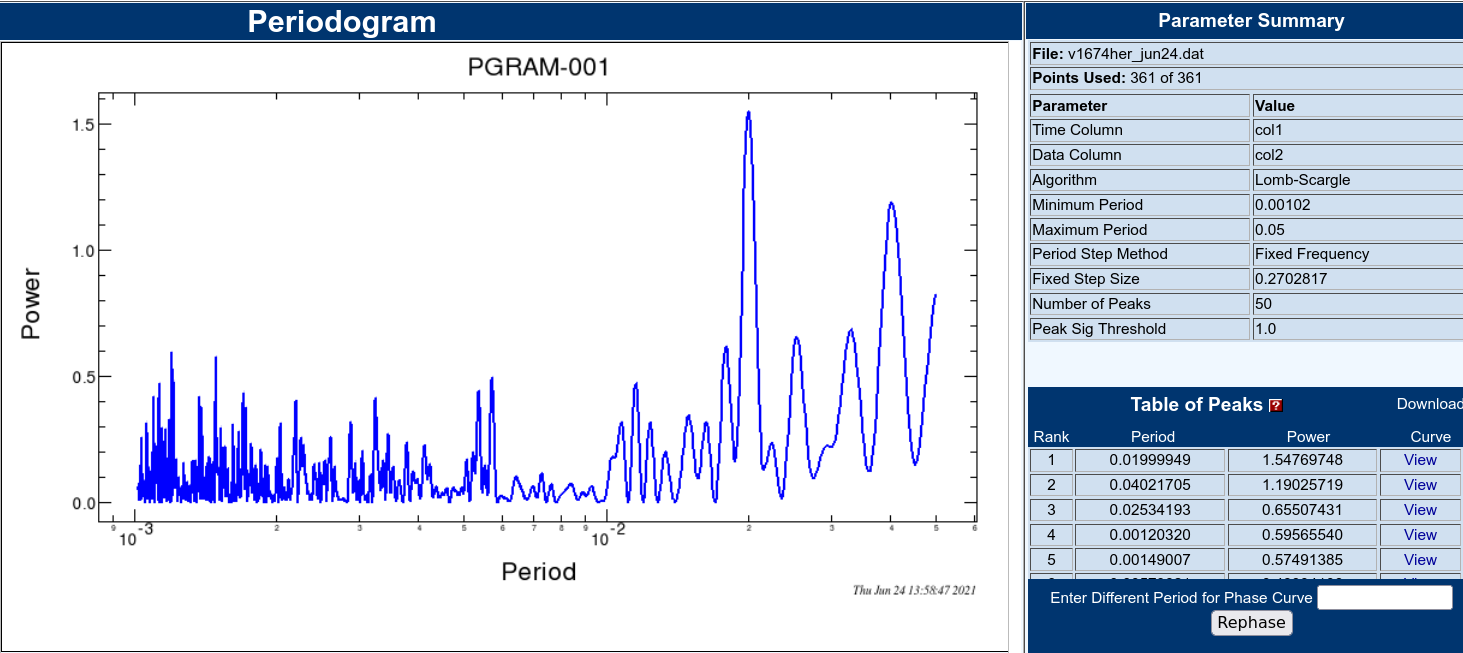
I have submitted these measurements to the AAVSO, CBA, and VSNet.
You can download my measurements below. A copy of the header of the file is shown to explain the format.
# Measurements of Nova_Her_2021 made at RIT Obs, UT 2021 Jun 24, # in fair conditions, # by Michael Richmond, # using Meade 12-inch LX200 and ATIK 11000. # Exposures 30 seconds long, v filter. # Tabulated times are midexposure (FITS header time - half exposure length) # and accurate only to +/- 1 second (??). # 'mag' is a differential magnitude based on ensemble photometry # using a circular aperture of radius 7 pix = 8.8 arcseconds. # which has been shifted so AAVSO 000-BMD-913 has mag=12.221 # which is its V-band magnitude according to AAVSO. # # UT_day JD HJD mag uncert Jun24.14559 2459389.64559 2459389.64996 11.942 0.014 Jun24.15029 2459389.65029 2459389.65466 11.934 0.014 Jun24.15081 2459389.65081 2459389.65518 11.940 0.013
Last modified 6/24/2021 by MWR.